2020 Alfa Romeo Giulia Ti Sport Carbon Review - Gilding The Lily
- Beautiful styling
- Engaging driving dynamics dialed in for enthusiasts
- Carbon kit borrows Quadrifoglio style for a lot less money
- Cabin is distinctive and has worthy upgrades
- Carbon pack is expensive for no extra power
- Definitely errs on sporty side, not comfort
- Rivals offer more all-round talent for less money
It's tough to argue against the idea that the real excitement in the compact luxury sports sedan segment is happening away from the big German dealerships. Witness, as prime example, the 2020 Alfa Romeo Giulia, perhaps not the first car you'd think of in the category but carving out an enthusiastic little niche there all the same.
The lion's share of attention goes to the Quadrifoglio flavor of Giulia, and that's no real surprise. After all, 505 horsepower from a 2.9-liter V6 makes for some serious performance from the compact sedan with a clover on its fender. Unfortunately it also kicks off at $74,500, and that's a whole lot of cash.
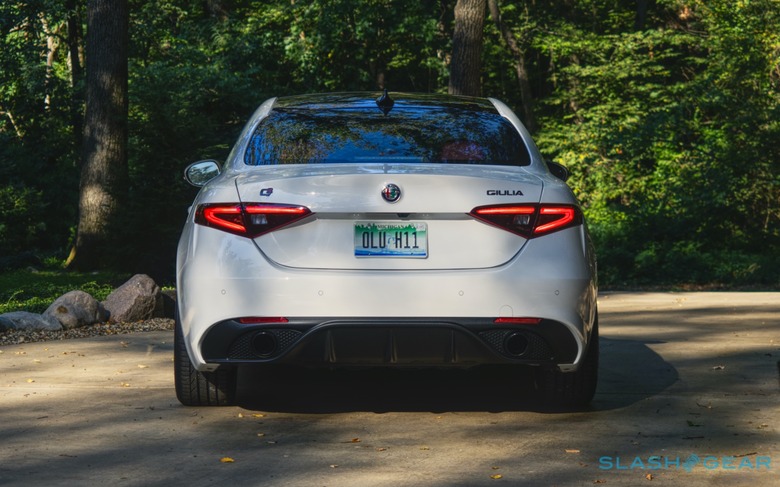
The 2020 Giulia Ti Sport Carbon slots in just below, with a far more attainable $48,400 (plus $1,295 destination) sticker. You can think of it as a style bridge between the regular Giulia Ti and the Quadrifoglio: you get the same power as in the former, but much of the aesthetic of the latter.
How willing you are to pay $7k over the price of a normal Giulia Ti RWD depends on how much priority you put on design, then. Alfa's 2.0-liter turbocharged inline-4 engine isn't weedy, with 280 horsepower and 306 lb-ft of torque, and for $2k more you can add all-wheel drive as well. An 8-speed automatic transmission comes as standard either way.
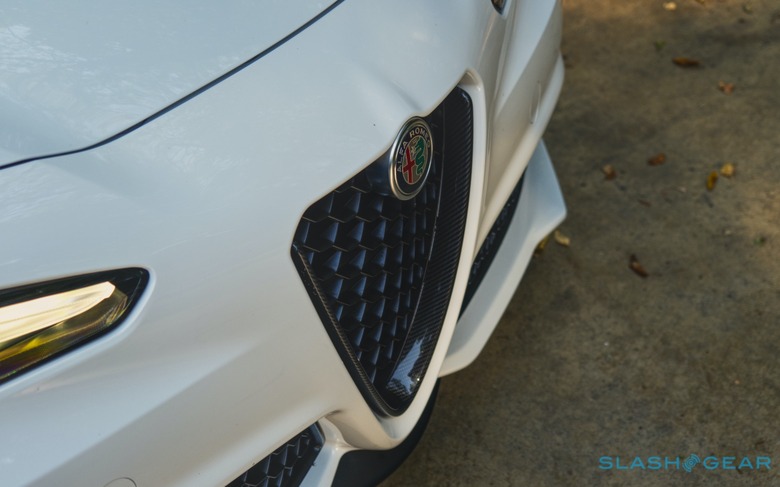
The standard Giulia remains one of the better-looking sedans in its segment, and a reminder that good looks aren't just about oversizing. The grille isn't huge, but the way it spears sharply into the lower bumper gives the Alfa some serious visual melodrama. Similarly, the bulging hood isn't the riot of creases we've seen elsewhere, but it leaves the Giulia looking taut and muscular.
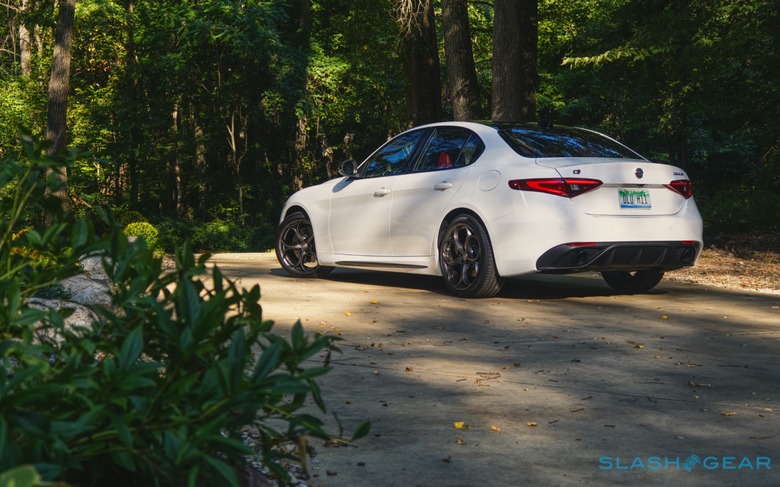
The Sport Carbon package swaps out much of the external trim for, you guessed it, carbon fiber. That means the grille, the side mirrors and sill plates, the rocker panel, and the wheel caps. The exhaust tips are dark-finished, as are the window surrounds, and there are special front and rear facias. There's no extra power, but it definitely leaves the Giulia looking the part.
As for the other options on my test car, the $500 19-inch 5-hole alloy wheels are a no-brainer, gloss red brake calipers peeking through their vaguely arachnid spokes. $1,350 adds the Ti Sport Performance package, with active suspension and a limited slip differential on the rear axle. $1,350 throws on a dual-pane sunroof.
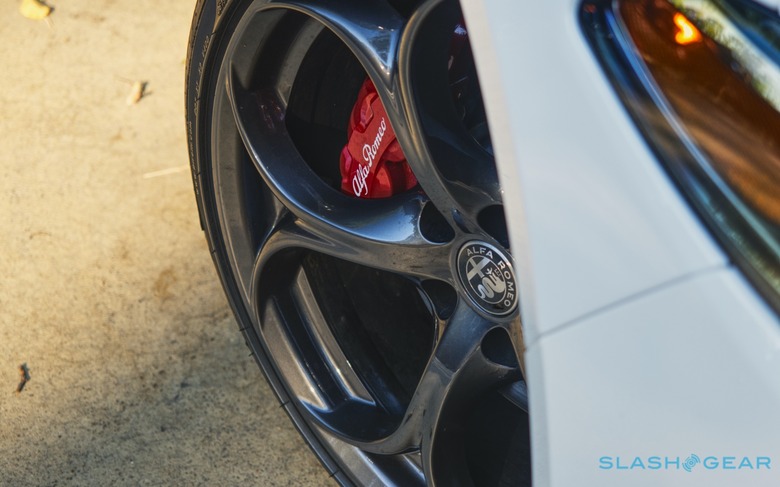
Inside, the Sport Carbon package adds more carbon fiber trim, leather sport seats that are both comfortable and supremely supportive, an 8-way power adjustable drivers seat, leather dashboard and upper door panels, aluminum pedals, a sport leather-wrapped wheel, perforated shift knob, and some sizable aluminum paddle shifters. $900 throws in the 14-speaker Harman Kardon audio system, and $300 a Qi wireless charging pad for your phone.
Finally, there's the Active Driver Assist package. For $3,250, you get navigation for the standard 8.8-inch touchscreen, Highway Assist and Traffic Jam Assist, Lane Keep Assist, blind-spot assistance, and adaptive cruise control. It also adds auto headlamp control and an infrared windshield. The regular Giulia Ti already gets remote start, parking sensors, a backup camera, Apple CarPlay, and Android Auto, plus heated front seats.
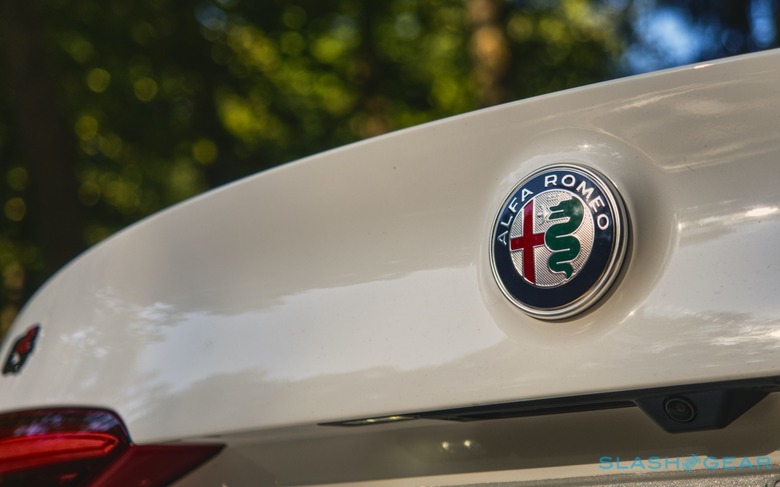
On the road, though you may not get the Quadrifoglio's potency, that's not to say the Giulia is slow. Indeed it's arguably more usable than its fearsome sibling which, like other clover-badged cars from Alfa Romeo, only really feels like it comes alive when you're pushing nine-tenths.
In contrast, the 2.0-liter turbo feels far happier used for point-and-squirt fun. 0-60 mph arrives in about 5.5 seconds, but equally important the Giulia plays giddily in the corners. Near-perfect steering weighting, along with noticeable but predictable tail-happiness make for a confidence booster. No, it's not the fastest sports sedan out there, but it has a spirit that encourages you to switch it into sport mode.
Alfa's suspension is set up to leave the Giulia flat and composed, even if you push a little harder than you ought, while the standard four-piston Brembo brakes grab as enthusiastically as their calipers are bright. Drive like that, though, and you probably shouldn't expect the 22 mpg combined economy the EPA says is possible, and which already isn't exactly stellar for the segment.

At the other extreme, there's a little less compliance in those moments you want to settle back and cruise. That's not to say the Giulia is unruly, but there's definitely more wind noise and more asphalt bumps make it through to the cabin than in, say, Acura's new – and excellent – 2021 TLX. The wafer-thin rubber on those 19-inch wheels doesn't exactly help, there, either.
Inside, Alfa made a few key changes with its last refresh, and the Giulia is all the better for them. Most important is that the larger infotainment touchscreen is now standard across the board, but generally the sedan's cabin does an impressive job of feeling almost entirely different from the rest of the Fiat Chrysler family. Considering that's much more than you can say for Maserati's current line-up, it's no small achievement.
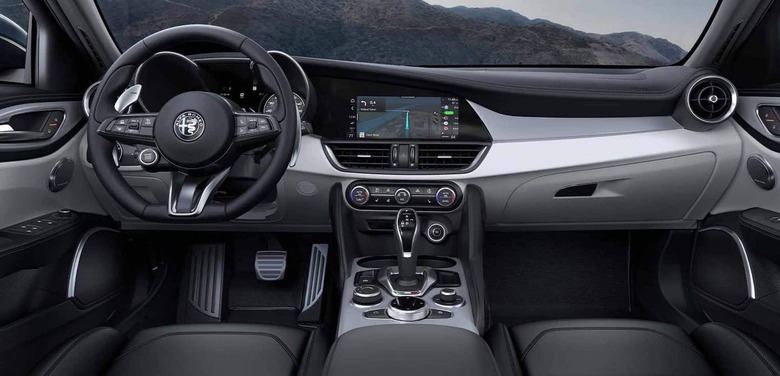
It's a fairly dark interior, even in the black/red finish of my test car, but it feels well put together. The vast aluminum paddle-shifters are borderline silly – they can make reaching for the wiper controls tricky, even – but there's no denying they add a little pizazz that rivals with their dinky flaps lack.
Stiffer suspension aside, it's a pleasant place to spend a longer ride. Rear legroom is average, but the 13 cu-ft trunk bests Genesis' G70 and can be made bigger still by dropping the split rear seats down.
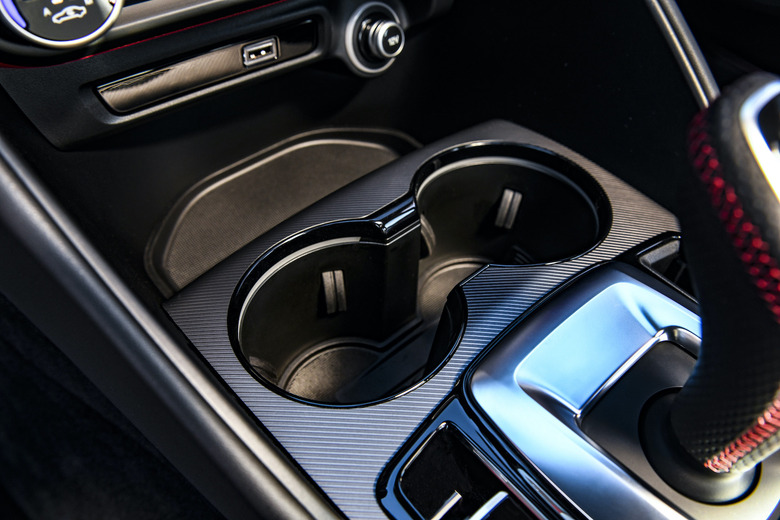
It's tough not to like the Giulia. Few cars in the segment are so beguiling in their design, and the experience behind the wheel is reminiscent of the purity that BMW enthusiasts bemoan is absent from recent 3 Series models. That may well be down to Alfa Romeo's unwillingness to compromise in the name of absolute comfort, and on the scales of sportiness versus cosseting the Giulia definitely tips sharply to one side.
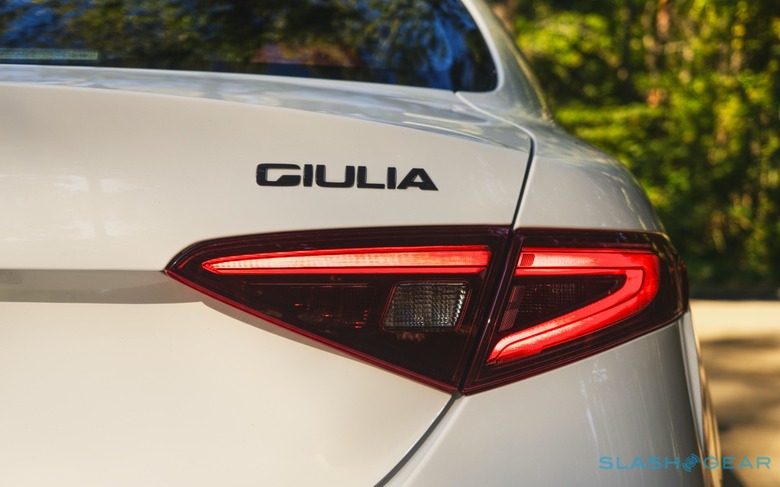
The bigger problem, though, is the price. At $57,345 as tested, that's a lot of money in a fiercely competitive category. A 2021 TLX A-Spec may be down on power and less ostensibly aggressive in its styling, but it still comes in at about $12k less; the excellent Genesis G70 can be had in V6 form for about $46k, and has a better standard equipment list and a longer warranty than the 4 years / 50,000 miles that Alfa offers.
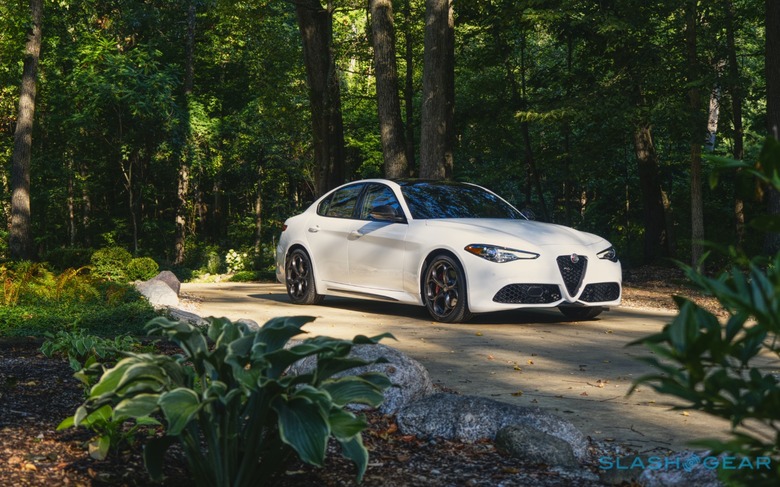
Were it my money, I'd skip the carbon fancies and focus on Alfa Romeo's extras that add actual performance or technology. A Giulia Ti RWD with the Active Driver Assist package, Ti Sport Performance Package, and those fancy wheels still isn't cheap – just shy of $48k including destination – but it feels like a decision far easier to justify. The Giulia Ti Sport Carbon looks the part, but Alfa's sports sedan doesn't need the gilding to convince you it's a winner.
